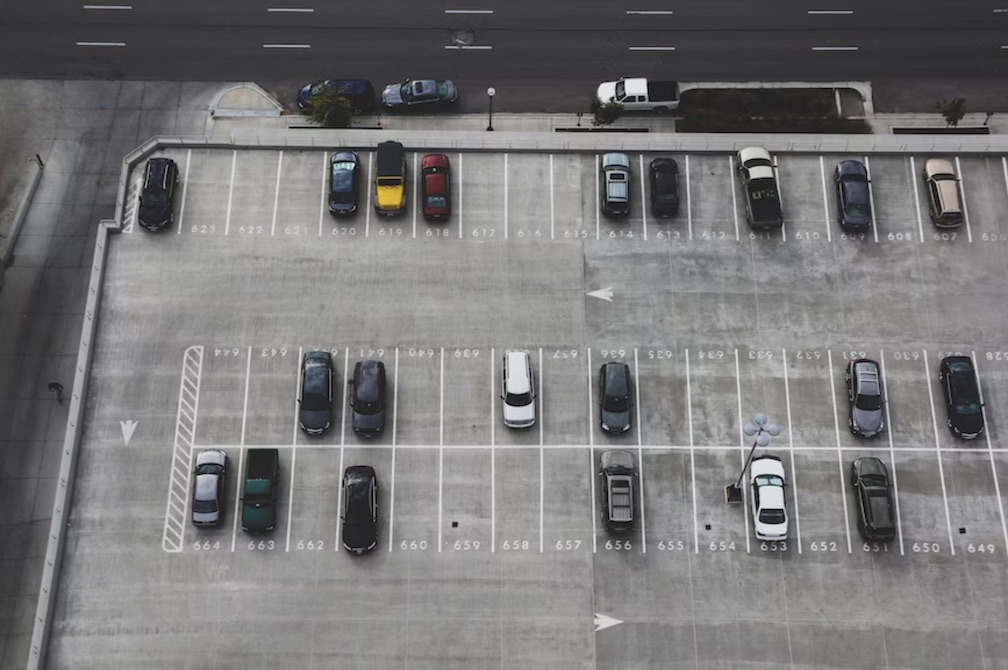Efficient Hospital Parking Management Solutions
- Written by Business Daily Media

A 2023 study conducted by the National Health Service (NHS) found that at least one-third of motorists visiting a hospital are late for their appointments due to parking issues. That’s 32% of the respondents in a survey of over 1000 motorists across the UK.
Adding to this statistic is another unfortunate one from the US – patients are finding exorbitant parking charges a financial burden. This is especially true in the case of cancer patients who need to visit hospitals on a daily basis for four to six weeks straight.
After all, a $30 parking ticket every single day (the average rate in most hospitals across New York) is enough to cause immense financial strain to someone who’s already undergoing expensive treatments and surgeries.
To the uninformed, parking may seem like an insignificant aspect of modern healthcare infrastructure. But if we calculate the time taken to spot vacant parking near a hospital (which is usually overcrowded), things start adding up. Not to mention the time it takes from wherever the parking spot is to the hospital unit.
No wonder patients miss crucial surgeries (some even six to eight hours long, and doctors need to throw their schedules off-balance. These problems (including the cost) can be resolved with the help of smart and efficient parking management solutions. Let’s understand them closely.
Proposed Parking Management Systems and Solutions
The following efficient and smart parking solutions are in use for hospitals to smoothen vehicle entry and exit.
1. Stack Parking
Also known as tandem parking, stack parking is a creative solution to ensure sufficient parking slots are available for incoming vehicles. The main aim of this parking solution is to prevent parking shortages, especially during rush hours.
The system involves stacking vehicles, usually in front of, adjacent to, or behind one another in a bunker-like fashion. Each slot is a moving platform with mechanical frames that may be raised or lowered. Since this parking system allows vehicles to be parked super close to each other, it saves space and creates more for other vehicles to get in.
Moreover, the stacks make it highly challenging for thieves or vandals to get their hands on these vehicles. This solution is ideal for establishments like hospitals where it is difficult to predict parking capacity on a day-to-day basis. Plus, the 3x parking space makes this a cost-effective solution for operators and motorists.
2. Valet Parking
Did you know that major hospitals across California (those with over 150 beds) already offer some type of valet parking service? This hospital parking management solution allows the driver to drop their vehicle off at a designated area, after which they simply need to activate the system on their smartphone app.
It establishes a connection with the parking garage, and a relevant spot is identified through cameras and sensors. The vehicle automatically drives off to a safe parking spot, as directed by the technology. According to FC Valet, the return process is the same – the driver needs to activate collection through the app, and the car dodges all obstacles (even if the space is tight) and arrives right on cue.
3. Shuttle Services
A prime example of shuttle services is the airport. Passengers may arrive in their respective vehicles, but they park those in a designated parking spot (which may be far from the airport). After that, a shuttle bus transports them to the airport facility for check-in and boarding.
The same provisions can be made for hospital parking to reduce the footprint in the vicinity. This solution is usually used for employees but can be introduced for guests and visitors too. The hospital gets to control the strategic placement of parked vehicles, and a smooth traffic flow is maintained.
4. Employee Parking Management
If a hospital’s employee parking is poorly managed, it can have a Domino effect where visitors' and patients’ parking is also disrupted. Plus, hospital employees may sometimes abuse premium visitor or patient parking spaces.
When a hospital has separate employee parking management in place, there are fewer chances of parking shortages throughout the day. Each employee may be given a permit which they need to show so that a parking spot nearest to their working facility is offered. Those in leadership roles need to actively enforce this program to get everyone on the same page.
Technologies like License Plate Recognition (LPR) and citation issuance may be used to ensure all employees follow the new parking rules.
5. Deployment of Parking Directors
Hospitals are busy establishments where maintenance of easy vehicular access and traffic flow are crucial. Without adequate queuing space, the problem of traffic congestion will again persist. Parking directors can be deployed at strategic spots, especially busy points, to ensure driveways are not clogged and vehicles are able to move smoothly.
These directors may play a key role in directing visitors and patients to vacate spaces whilst shutting off complete parking sections to discourage unnecessary circulation.
Common Challenges These Solutions Help Overcome
Reading about each parking solution must have given a good idea of the problems it may help eliminate. However, let’s take a look at the larger picture – the proposed parking solutions will help overcome the following challenges –
- Traffic Flow Optimization – With a real-time tracking system for parking occupancy, vehicles will not need to drive around in circles. This will distribute traffic evenly for a smooth flow.
- Clogged Driveways – An automated gate chain or barrier can prevent visitors from parking on driveways in haste. This will make room for medical vehicles to drive smoothly.
- Employee Parking Congestion – Dedicated employee parking spots will make it easier for them to arrive on time for patient appointments, early-hour surgeries, etc.
- Unauthorized Access – This is usually the case when the hospital is located near a tourist spot or public park. Smart parking security solutions like QR codes and LPR systems can prevent unauthorized parking at non-monitored spots.
- Late Appointment and Visitor Arrivals – Entry and exit points, when automated, help regulate the traffic flow of different motorists. Visitor parking can be separated from emergency and employee parking to ensure visitors do not miss visiting hours and patients do not miss crucial appointments.
- Vehicle Queuing at the Entrance – Cameras and sensors, when installed in high-traffic areas, will make it easier to detect parking violations. A dedicated drop-off point will clear the entrance for emergency vehicles and staff.
The Key Takeaways
While most people do not view it this way, parking facilities may be some of the most sensitive areas of a hospital. This is because this region impacts the entire workforce (from clinicians to administrative staff). Secondly, a parking space is the first interaction or impression a patient/visitor has of a hospital.
If the parking is not designed to be cost-effective and easy to access, the overall patient/visitor experience is significantly hampered. Ireland even passed the Hospital Parking Charges Act in 2022 to prevent the imposition of undue charges on patients, visitors, or staff members.
Finally, an inefficient parking layout can disrupt nearby parking and congest streets because visitors are forced to choose non-monitored spots.
Since hospitals are large establishments with heavy traffic flow, a reliable smart parking facility is a must-have to keep community traffic in order and the hospital in optimal working conditions.










